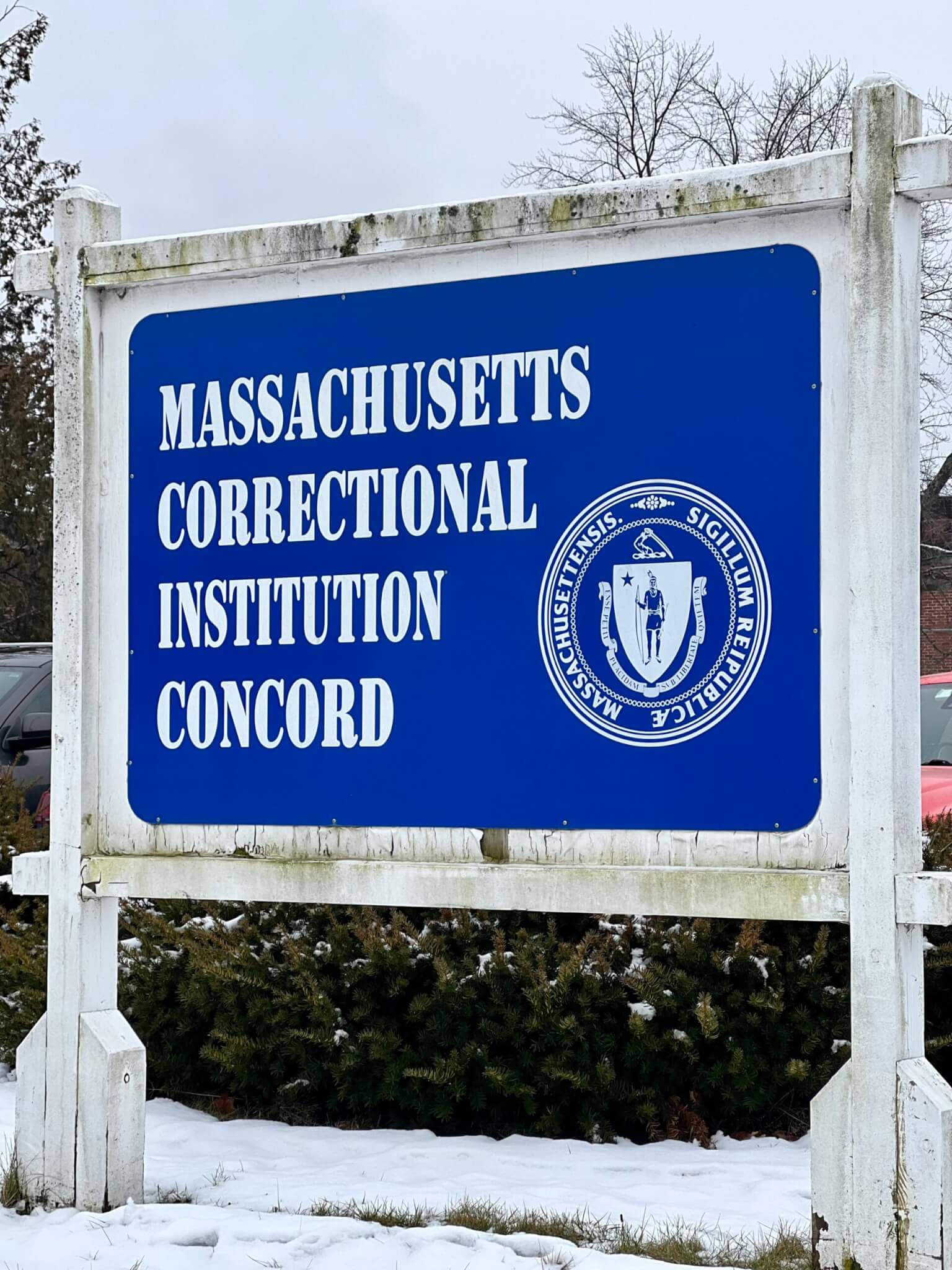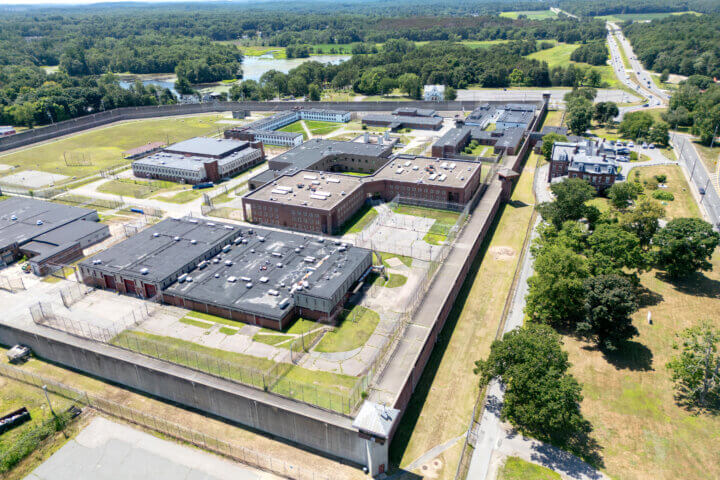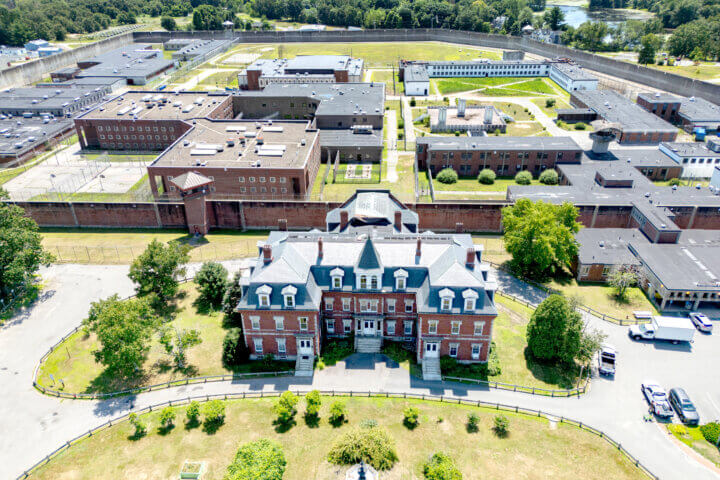Editor’s Note: This story is published with permission from CommonWealth Beacon, a nonprofit, nonpartisan news organization reporting on state issues. The original can be viewed here.
Incarceration and crime rates both down sharply since 2018 reforms
FIVE YEARS AFTER Massachusetts enacted sweeping reforms aimed at reducing incarceration and addressing racial disparities in the criminal justice system, a new study says the state has seen sharp decreases in both incarceration and crime rates, but found racial disparities in the system have widened.
The study, a collaboration between researchers at The Boston Foundation and MassINC, the nonpartisan public policy think tank that publishes CommonWealth Beacon, said incarceration rates decreased nationally over the last decade. But the rate in Massachusetts declined at more than twice the national rate, falling 45 percent since 2012 compared with a 21 percent decline nationally.
The decline accelerated following the passage of two major criminal justice reform laws in 2018, and the decrease is even more notable, the study says, because the state’s incarceration rate was already only half that of the national rate in 2012.
Massachusetts now has the lowest incarceration rate of any state, and it is less than one-third the national rate.
The release of the new report showing the dramatic decrease in incarceration came the same day that the state announced plans to close the medium-security men’s prison in Concord, which is at only half capacity.
Meanwhile, rates of violent crime and property crime in Massachusetts have also decreased since 2018 – with the exception of an uptick in property crime from 2021 to 2022 and an increase in violent crime in 2022. When measured against rates in 2012, however, violent crime is down 21 percent in Massachusetts versus a 2 percent decline nationally. Property crime in the state has fallen by half over the past decade compared with a one-third drop nationally.
Except for an increase in weapons charges, there were overall decreases in every category of major crime in the state.
Reform advocates and some criminal justice experts have long argued that the much higher incarceration rates in the US compared with other developed countries do not necessarily lead to lower crime rates. Earlier research by MassINC and The Boston Foundation also suggested that neighborhood stability in some areas of Boston could be harmed rather than helped by high incarceration rates.
The new study said it’s not possible to draw a definitive link between the 2018 reforms and the decreases in both incarceration and crime, but said the evidence strongly supports such a conclusion.
“It is difficult to know precisely what share of the reduced incarceration and crime is attributable to changes in public policy and practice,” said the report. But “analysis of a wide range of data strongly suggests” an impact of reform efforts over the last decade, “particularly the passage of comprehensive reform legislation in 2018.”
.
The 2018 reforms brought major changes in drug laws, ending mandatory minimum sentences for a number of offenses, while increasing penalties for trafficking fentanyl. It decriminalized some lower-level offenses, while looking to divert those charged with other lower-level crimes away from the criminal justice system. It also sought to overhaul pretrial detention, imposed new rules on the use of solitary confinement in state prisons, and called for development of a robust data-tracking system to allow for better monitoring of corrections populations and the effectiveness of strategies aimed at reducing recidivism.
While incarceration rates fell for all racial groups in Massachusetts, because the decline was steeper for Whites than Blacks or Latinos, racial disparities have grown since the 2018 reforms, and Latino incarceration rates have been increasing since 2020. From 2017 to 2021, the White incarceration rate fell by 40 percent, while the rates for Latinos fell by 32 percent and for Blacks fell by 21 percent.
The study found even bigger racial disparities in pretrial detention, where there has been a 41 percent decrease in White detainees, a 32 percent decrease in Blacks being held, and 37 percent increase in Latino confinements.
When it comes to new criminal cases brought since 2019, the study found that new cases were down 26 percent among Whites, 13 percent among Blacks, and 1 percent among Latino residents. The study said differences in new motor vehicle offense charges, which were down 26 percent for Whites, 9 percent for Blacks, and up 8 percent for Latinos, explain all of the White-Black gap in new cases and half of the difference between Whites and Latinos.
Another area with big racial disparities is the population of inmates sentenced to county houses of correction, where there has been a 52 percent decrease in the White inmate population, a 40 percent decrease in the Black population, and a 3 percent increase in the Latino population.
Speaking on a panel Wednesday morning that discussed the report, Arnie Stewart, the deputy chief counsel at the Committee for Public Counsel Services, pointed to the yawning racial disparities that remain in the system as evidence that a key goal of the reform effort has not been met.
“The promise is not complete, and the promise in some areas has failed,” she said, calling the gaps grounds for “dismay.”
Ben Forman, the research director at MassINC and a co-author of the report, said to know what’s behind racial disparities it’s imperative that the state fully build out the data collection systems called for in the 2018 reform law. “They’re what we really need to understand the root causes of disparities in the criminal justice system,” he said.
Although the state has made a strong effort to develop the data systems called for in the reform law, “the information available to researchers and the public has not appreciably improved since 2018,” the report says. “A major obstacle has been ensuring that all individuals who come into contact with the criminal justice system are tracked seamlessly from agency to agency with a single common identifier, as required by the law.”
One focus of the 2018 reforms was decriminalizing some lower-level offenses and having more offenders diverted to programming outside the criminal justice system. A sign that those efforts may be driving change is the larger decline in incarceration among younger “emerging adults” than among older offenders.
The decrease in 18 to 24 year-olds in county jails has been twice as large as that for those 25 and older. In state prisons, the population of 18 to 24 year-old inmates is down 56 percent versus 33 percent for older inmates.
“Diversion has been key in terms of that number going down,” Stewart said of the population of younger inmates. “It speaks to the fact that when the courts and practitioners follow the science, it works.”
As part of an effort to reduce recidivism, the state has begun appropriating $33 million a year in new spending for reentry programs as inmates are released, with roughly half of that money going to housing programs, while the rest is being spent on job training and other services. The state has also more than tripled spending on youth crime prevention programs, from $12 million in 2018 to $40 million today.
One significant challenge that remains largely unaddressed, according to the report, is the need for more inpatient treatment beds and support community housing placements as alternatives to incarceration for those suffering from mental illness and addiction issues.
The report said there are 660 adult beds across that system and 30 for youth, numbers that “have remained flat over the last decade.” As a result, it said, half of those seeking a placement wait more than 100 days.
The report said total corrections spending in the state has decreased slightly since 2019 – about 3 percent when adjusted for inflation. That has occurred over a period when the overall state budget has increased about 20 percent. But because the inmate population has dropped so markedly, spending per inmate has soared.
The state now spends $117,000 per year for each inmate in the county corrections systems, and $139,000 per year for each inmate in the state prison system.
The report said public safety officials defend the spending levels, saying the state’s prisons and jails “were historically overcrowded and under-resourced” and that they now provide a safer environment with more room for services. Critics, say the report, have questioned whether the exorbitant per-inmate spending is “leading to better conditions and improved services, citing long waiting lists for access to rehabilitative programs and a 2019 investigation by the US Department of Justice, which found the constitutional rights of prisoners with serious mental illness were routinely violated in DOC facilities with inadequate treatment resources and poorly trained staff.”
Elizabeth Matos, who heads the civil rights division in the Massachusetts attorney general’s office, said more programming and services for inmates is crucial if they are to successfully reenter society when released. “People are coming out very broken,” said Matos, who formerly directed the advocacy organization Prisoners’ Legal Services.
Despite the increases in funding for reentry services, Gregg Croteau, CEO of the Lowell-based nonprofit UTEC, which works with young adults who have been involved in the criminal justice system, said the programming is still not reaching all inmates. Speaking on the Wednesday morning panel at The Boston Foundation offices, Croteau said research says inmates should be receiving “transitional planning” counseling starting six to nine months before their release. “That is not happening across the board,” he said, urging a bigger investment in reentry.
Peter Ciurczak of Boston Indicators, the research arm of Boston Foundation that collaborated on the study, said the new funding for reentry and other services has come while the state was “relatively flush with cash.” He said it will be important not to lose that funding amid the current budget “belt tightening” on Beacon Hill.
Underscoring the dramatic decline in the state’s prison population, shortly after the report was released on Wednesday, Gov. Maura Healey announced plans to close the state’s medium-security men’s prison in Concord. The Department of Correction said incarceration rates in the state are at a 35-year low, and that MCI-Concord is currently at about 50 percent capacity with about 300 inmates.
The Healey administration said inmates in Concord will be transferred to other correctional facilities and that 85 percent of current employees at the prison will move to jobs elsewhere in the state corrections system.
The administration said the planned July 1 closure will generate savings of $16 million per year in operating costs and will also allow the state to avoid $157 million in planned capital spending upgrades and $33 million in deferred maintenance at the prison.
This article first appeared on CommonWealth Beacon and is republished here under a Creative Commons license.![]()






